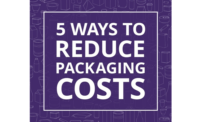Study finds plastics in packaging reduce environmental costs
A new study by Trucost (trucost.com) finds the environmental cost of using plastics in consumer goods and packaging is nearly four times less than it would be if plastics were replaced with alternative materials. The study is based on natural capital accounting methods, which measure and value environmental impacts, such as consumption of natural water and emissions to air, land and water which are not typically factored into traditional financial accounting.
Trucost’s latest study, Plastics and Sustainability: A Valuation of Environmental Benefits, Costs, and Opportunities for Continuous Improvement, builds on earlier research by comparing the environmental costs of using plastics to alternative materials and identifying opportunities to help lower the environmental costs of using plastics in consumer goods and packaging.
These significant results disrupt a common misperception around plastics. Trucost found that replacing plastics in consumer products and packaging with a mix of alternative materials that provide the same function would increase environmental costs from $139 billion to $533 billion annually. That’s because strong, lightweight plastics help us do more with less material, which provides environmental benefits throughout the life cycle of plastic products and packaging.
The study also concluded that the environmental costs of alternative materials can be lower per ton of production but are greater in aggregate due to the much larger quantities of material needed to fulfill the same purposes as plastics.
In addition, the report’s authors recommend steps to help further reduce plastics’ overall environmental costs, such as by increasing the use of lower-carbon electricity in plastics production, adopting lower-emission transport modes, developing even more efficient plastic packaging, and increasing recycling and energy conversion of post-use plastics to help curb ocean litter and conserve resources.
Looking for a reprint of this article?
From high-res PDFs to custom plaques, order your copy today!





